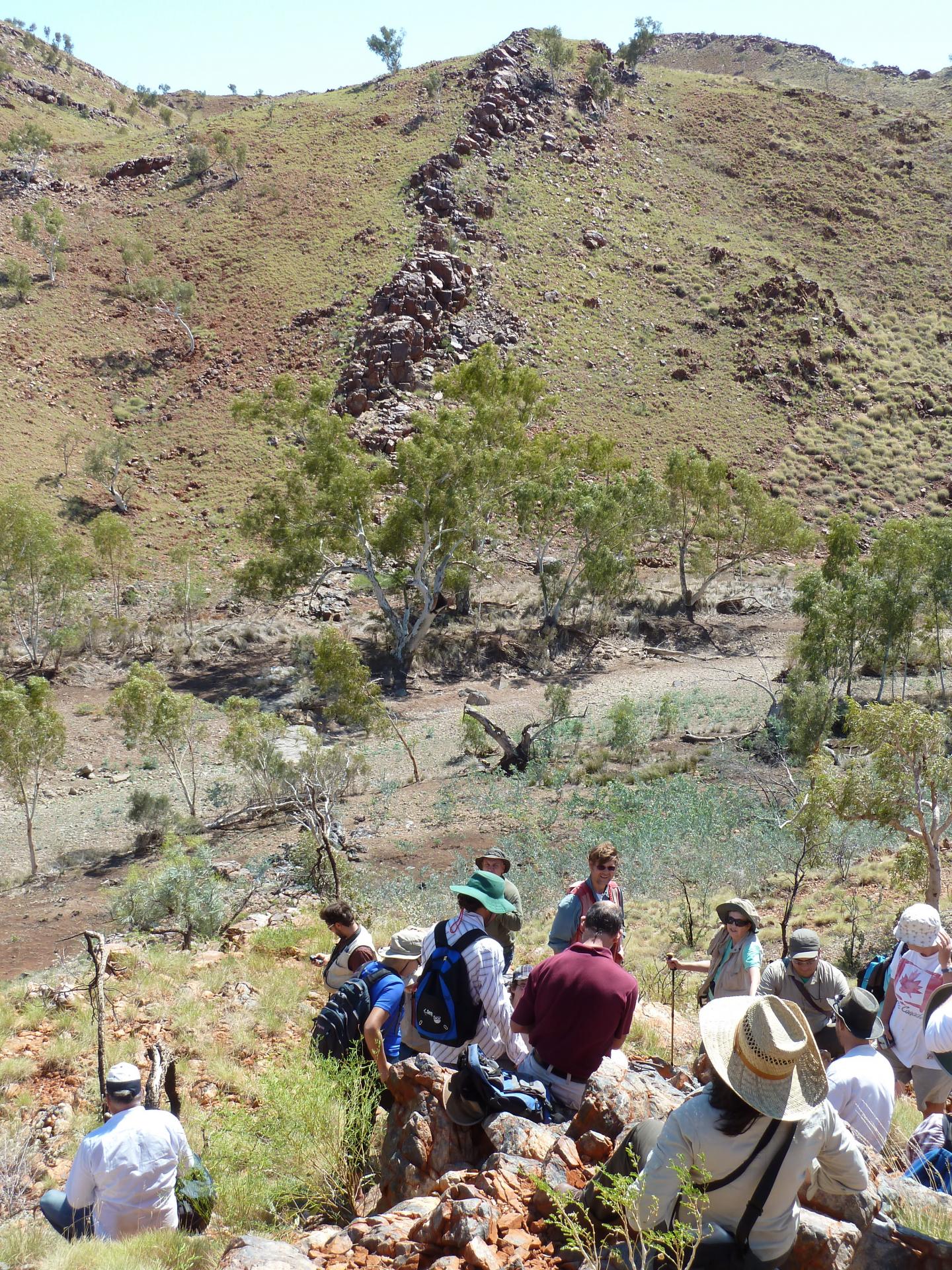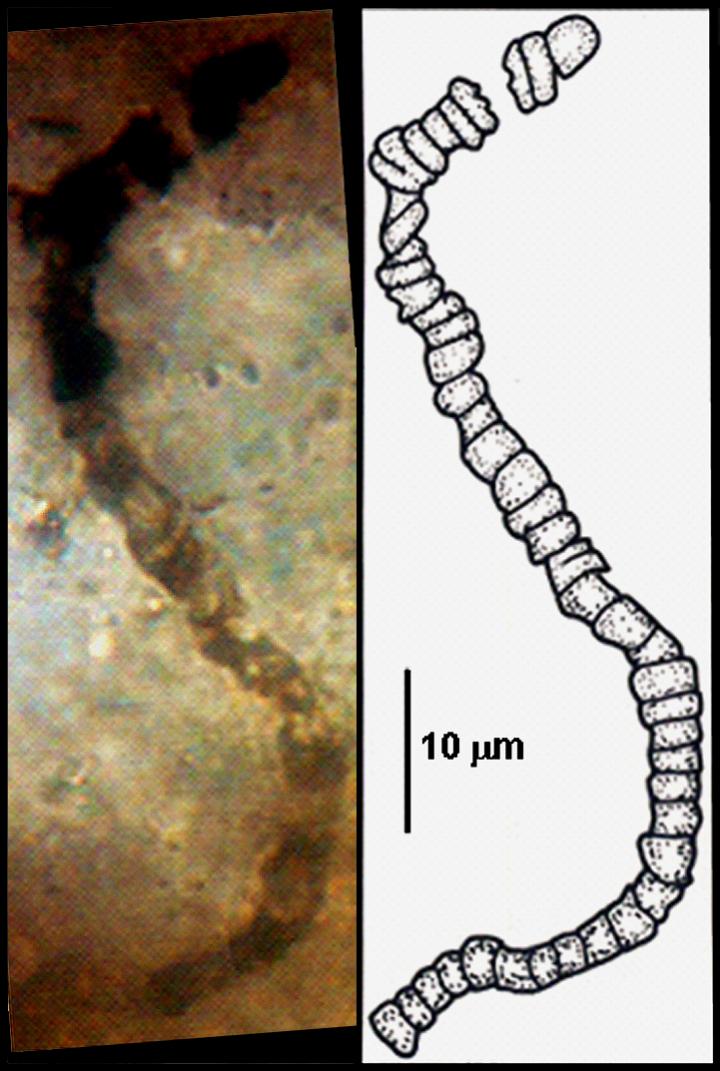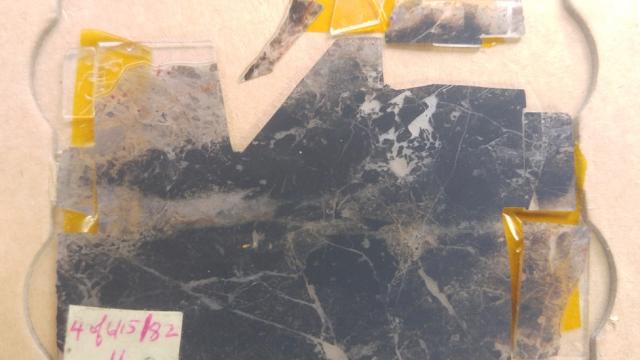Our planet popped into existence some 4.5 billion years ago. Life didn’t waste time, emerging shortly thereafter – but the exact timing of this momentous event is still unknown. A study published today offers new clues into this enduring scientific mystery by claiming to have discovered Earth’s oldest fossils in 3.5 billion-year-old Australian rock. Sounds like an important result, but other scientists are disputing the claim.
Decades ago, UCLA scientist J. William Schopf collected samples of ancient rock in Western Australia’s Apex chert deposit. These rocks are fairly unique in that they have managed to avoid the ravages of time, appearing almost identically to the way they did some 3.5 billion years ago. Normally, rocks get twisted, contorted, and blasted with heat due to various geological processes, but not these rocks.

The Apex Chert, a rock formation in Western Australia that is among the oldest and best-preserved rock deposits in the world. (Image: Courtesy of John Valley, UW-Madison)
Schopf completed his first analysis of these rocks in 1993, finding what appeared to be microfossils; some structures within exhibited a cylindrical, filamentous shape suggestive of life. More research was done on the samples in 2002, but sceptics remained unconvinced, saying the shapes were strange minerals that just happened to look like the fossilized remnants of biological specimens.
Now, in yet another analysis of these rocks, Schopf, along with colleagues from the University of Wisconsin-Madison, say they have definitive proof that these structures are the real deal, making them the oldest fossils ever found on Earth. These results were published today in the Proceedings of the National Academy of Sciences.
The researchers are claiming to have found 11 different microbial specimens in the ancient Australian rock, linking their preserved physical structure to chemical signatures characteristic of life. These aren’t fossils of ancient fish, reptiles, or bugs, but rather primitive forms of microbial life, such as now-extinct bacteria and microbes from an early branch of life known as Archaea.

One of the microfossils discovered in a sample of rock recovered from the Apex Chert. (mage: Courtesy of J. William Schopf, UCLA)
To make this discovery, the researchers used a Secondary Ion Mass Spectrometer (SIMS) to separate the carbon within each fossil into its constituent isotopes. This allowed the scientists to measure their respective ratios. In this case, carbon-12 was teased out from the carbon-13 of each fossil. “The differences in carbon isotope ratios correlate with their shapes,” said John Valley, a professor of geoscience at the University of Wisconsin-Madison and a co-author of the study, in a statement. “If they’re not biological there is no reason for such a correlation. Their C-13-to-C-12 ratios are characteristic of biology and metabolic function.”
Dominic Papineau, an Earth scientist from the University College London, told Gizmodo that “this team has done some good work” and he believes “they have increasingly compelling evidence that these Apex microfossils are exactly that: fossil microbes!”
Papineau said the samples appear to be composed of kerogen — complex fossilized organic material — that contains the elemental, molecular, and isotopic compositions of degraded and slightly cooked microbial life. The interpretation of these organisms as a mixture of methane- and oxygen-producing microbes is reasonable, says Papineau, but as for their status at the world’s oldest fossils — not so much.
[referenced url=”https://gizmodo.com.au/2017/09/these-canadian-rocks-may-contain-the-oldest-known-traces-of-life/” thumb=”https://i.kinja-img.com/gawker-media/image/upload/t_ku-large/sepaosnlz14rfx8ogaez.jpg” title=”These Canadian Rocks May Contain The Oldest Known Traces Of Life” excerpt=”Traces of graphite in ancient Canadian rocks were produced by microorganisms 3.95 billion years ago, according to new research. (Image. Tsuyoshi Komiya, The University of Tokyo) Researchers working at a sedimentary rock formation in northern Labrador, Canada, say they have uncovered evidence of primordial life in 3.95 billion-year-old rocks. The discovery, which is already drawing scrutiny and some scepticism, suggests that microbial life emerged relatively quickly after the formation of our planet.”]
Earlier this year, Papineau, along with his colleague Matthew Dodd, published evidence of fossils found in a sedimentary rock formation in northern Labrador, Canada that are at least 3.77 billion years old. “The only thing I disagree with the team is that these are the oldest microfossils,” Papineau told Gizmodo. “We will soon prove again to the world that there are unambiguous microfossils in the Nuvvuagittuq jasper and that our latest evidence will fit well with the interpretations from this paper.”
David Wacey, a scientist at the University of Western Australia’s Centre for Microscopy, Characterisation and Analysis, was less charitable in his assessment of the new PNAS paper examining the Australian rock.
“I find this manuscript to be a poor piece of science containing over-interpretations of data that are not statistically robust,” Wacey told Gizmodo. “It also shows ignorance – I assume deliberately so, rather than being unaware – of previously published work and a continued reliance on a technique (Raman spectroscopy) that has already been shown to be unfit for the purpose in which it is applied by the authors.”
Wacey said the authors have ignored previous work “that has clearly shown that their favoured Raman technique does not possess the spatial resolution to show the true distribution of the kerogenous carbon in these objects,” while at the same time failing to “cite the latest and most detailed paper that performed very high spatial resolution analysis of such objects” — a study in which Wacey, to be fair, is listed as lead author.
Wacey summarized his objections thusly:
[The] light microscope and Raman data presented here do not, in my opinion, demonstrate that these objects are microfossils, and the isotopic data are scarce and questionable. Even if the isotopic data do turn out to be technically robust, similar data could be produced by adsorption of multiple generations and/or sources of carbonaceous material onto mineral grains in a complex hydrothermal setting. Whether such adsorbed carbonaceous material is ultimately biogenic, non biogenic or a mixture of both is still open to debate, but these microscopic objects are not, in my opinion, microfossils.
Wacey also said there was a “fundamental flaw” in the way the paper was handled by the editors of PNAS.
“It is, quite frankly, beyond belief that this paper was reviewed by Andrew Czaja, an ex-student and collaborator of lead author Schopf,” Wacey told Gizmodo. “Notably, Czaja and Schopf collaborated on several papers using the flawed Raman technique on exactly this Apex material [here, here, and here]. “This raises serious questions about the editorial processes within PNAS.”
Wacey, by the way, is an active participant in the hunt for the planet’s oldest fossils. In 2011, Wacey’s team Proceedings of the National Academy of Sciences]
